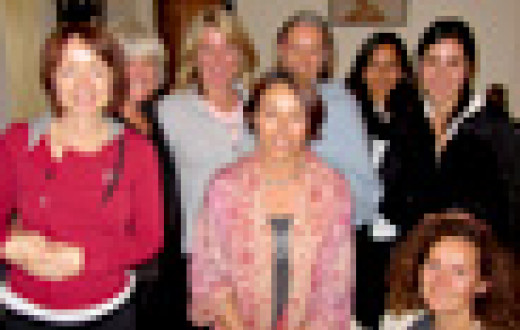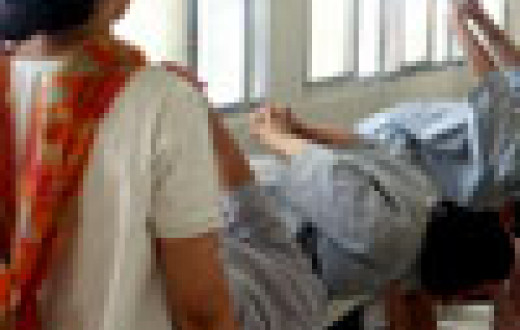By Sejal Shah
Open your hips and strengthen your back as you move step by step into the supple pigeon pose.
Pigeon pose, or Kapotasana (caap-oh-TAA-saa-nah) in Sanskrit, is a hip opener that safely opens your hip joints. It also helps prepare your body to sit in meditation more easily. Pigeon pose strengthens the back, eases back pain, and is said to open up the heart chakra. Kapota is Sanskrit for dove or pigeon, and asana is the Sanskrit word for posture or yoga pose.
Level of difficulty
Intermediate to advanced
Step-by-step instructions
There are four variations of pigeon pose:
Pigeon pose
Resting pigeon pose
One-legged king pigeon pose
King pigeon pose
Here are step-by-step instructions to explore the first three variations:
Method 1
Start with cat and cow stretch to loosen up, then come into a tabletop position on your hands and knees with your hands shoulder-width apart and your knees hip-width apart.
Move the right knee forward on the mat behind the right hand, placing the outer edge of the right shinbone and right buttock on the mat.
Keep the right knee bent and pointing forward.
Stretch the left leg out behind you with the top of the left knee, left thigh, and left ankle resting on the floor. Your left foot should face the ceiling.
With your right heel near the left hip bone, gently lower your pelvis down.
Breathing in, press the palms onto the floor, extend your spine, open the shoulders and chest, and lift the sternum up.
To advance into resting pigeon pose take a deep breath in, and as you exhale fold forward, bringing your torso over your right leg. Stretch your arms straight in front of you with your elbows slightly bent. Place your forehead on the mat in front of you, and rest with gentle breaths in and out.
To advance further into a one-legged king pigeon, slowly bring the torso upright, then as you exhale, gently bend the left knee and grab hold of the left big toe with the left hand. Keep the hips square.
Breathing in, open up your chest. Roll the left shoulder externally so that the left elbow points toward the ceiling.
Pull the left foot close to the back of your head.
Hold the pose, and keep breathing (3-5 deep breaths).
Inhale, release the left foot, and exhale as you straighten the left leg.
Return to the tabletop position, and repeat with the left leg in front.
Method 2
Stand at the front of your mat with feet hip-width apart and arms alongside the body.
Exhale, and come into standing forward bend.
Inhale, and go into forward lunge pose with the right leg forward and the left leg back.
Exhale, and place the outside of the right shin on the mat in front of you with the right heel near your left hip.
Place the left knee down on the yoga mat with the left foot facing the ceiling.
Place the palms down in line with the right foot.
Inhale, press the palms into the floor, straighten your arms, and simultaneously elongate your spine, open the shoulders and chest, lift your sternum, and look up.
Hold the position for 30 to 60 seconds and breathe deeply.
If you are comfortable, you can proceed either to resting pigeon pose or to king pigeon, or return to forward lunge, then repeat with the left leg in front.
Method 3
Start in the diamond pose.
Gently stretch your arms forward and ground them firmly.
Lift your knees and straighten your legs, coming into downward-facing dog.
Do steps 2-13 from method 1.
To release the posture come back into downward dog, then repeat with the opposite side leg forward.
Benefits of pigeon pose
Opens tight hips by stretching the thighs, groin, back, piriformis, and psoas muscle
Increases external rotation of the femur in the hip socket and lengthens hip flexors, creating more flexibility in the hips
Stretches the muscles, tendons, and ligaments around the knees, and increases circulation in these areas
Improves posture and respiration
Alleviates back pain
Draws the focus inward, calming the mind
Opens up the cervical region and the shoulder joints
Removes accumulated stress from the neck region
Stimulates the thymus gland, improving immune function
Helps relieve sciatica, colitis, and piles
Improves blood circulation to the muscles of the pelvic floor
Helps get rid of excess visceral fat
Prepares you for seated postures and backbends
Precautions, common mistakes, and contraindications
Rotated rear leg
Your rear leg should be in a neutral position rather than rotated outward. To correct this tuck your toes under and lift your thigh to adjust so your hips are square.
Hips not square
Make sure your hips are properly aligned. Don't collapse toward either side. Keep your hips square using props and padding as needed.
This pose is contraindicated for people with knee injuries, recent knee surgeries, spinal, abdominal, or sacral injuries, sacroiliac issues, hip injuries, and those who have undergone recent hip replacement surgery.
People with delicate or inflexible wrists should also be careful.
Modifications and variations
To make it easier
If the hip of the leg that is bent in front of you doesn't touch the floor, use adequate padding under the buttock on that side. You can use several blankets or a block. It's important to evenly distribute your weight on both hips by keeping your hips square. Otherwise, you are likely to put stress on the knee, and you may twist your sacrum.
If resting pigeon pose is difficult, use a block under your forearms and/or under your forehead. This creates a support system of props so that you can relax into the forward bend.
If pigeon pose just doesn't work for you, thread and needle pose is a good substitute.
To make it more challenging
As you become more advanced you can move on to the one-legged king pigeon pose as described in method 1 above, or to the full version of the king pigeon pose. And if these are not possible for you, you can try a mermaid pose instead.
Mermaid pose
After step 6 in method 1, bend your left knee and reach back for your left foot with your left hand. Hook the elbow of your left arm around the top of your left foot. Once you have the hook, reach your right arm up and back to clasp the left fingertips or wrist.
Preparatory poses and follow-up poses
Seated Cradle (preparatory)
Reclined Cradle (preparatory)
Bound Angle (Butterfly) Pose (preparatory)
Seated Forward Bend (preparatory)
Cat and Cow (preparatory)
Child’s Pose (follow up)
Learn more
Browse our entire yoga pose library and learn more about each yoga pose in detail.
While a regular yoga practice can result in improved health it is not a substitute for medical treatment. If you have a medical condition, consult your doctor before beginning the practice of yoga. Yoga is best learned and practiced with a trained and certified yoga instructor. Check out the Art of Living Yoga Studio to get started.
Take your asana practice to the next level
When you follow up your asana practice with powerful SKY breathwork and meditation you will take your practice to the next level. Join us for a free online session with a live instructor, and experience guided breathwork and meditation now.




























